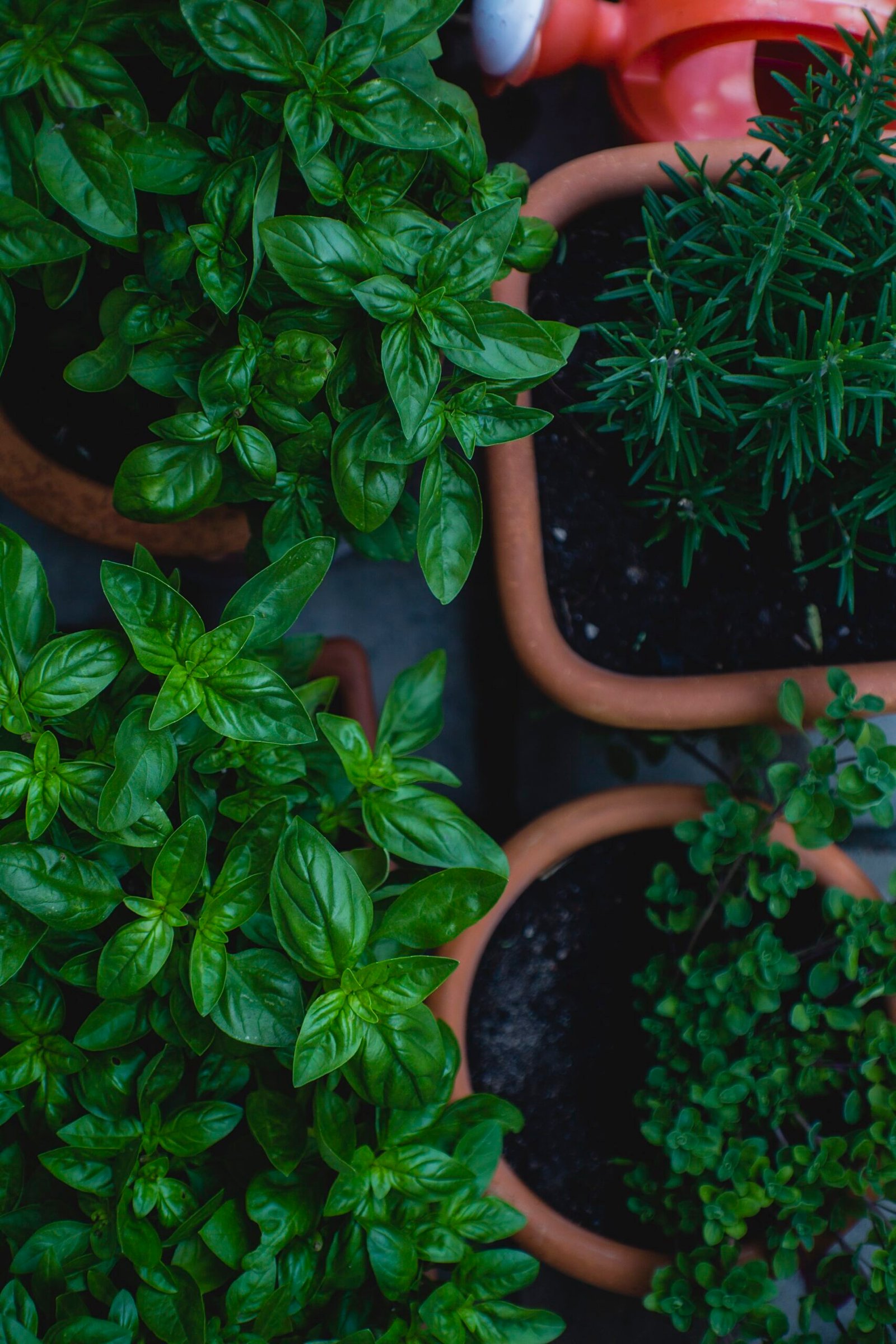So, you think adding herbs to your meals is a healthy choice? Well, you might want to think twice before sprinkling them liberally onto your plate. Turns out, certain herbs can be packed with a little ingredient called oxalate. If you haven’t heard of it before, don’t worry, you’re not alone. Oxalate is a naturally occurring compound found in many plants, including those leafy greens we’ve always been told are good for us. In this article, we’ll explore the effects of oxalate in herbs and whether it’s something you should be concerned about. Get ready to rethink your seasoning strategy!

This image is property of images.unsplash.com.
What is Oxalate?
Definition of Oxalate
Oxalate, also known as oxalic acid, is a naturally occurring compound found in various plant foods. It is classified as an organic acid and is commonly present in many fruits, vegetables, and herbs. Oxalate is known for its ability to bind with minerals, particularly calcium, forming crystals. These crystals can sometimes accumulate in the body, leading to the formation of kidney stones and other health concerns.
Formation of Oxalate
Oxalate is formed through a metabolic process in plants known as the oxalate biosynthetic pathway. This pathway involves the conversion of certain compounds present in plants, such as glyoxylic acid or ascorbic acid, into oxalate by a series of enzymatic reactions. The production of oxalate in plants serves various purposes, including defense against herbivores and regulation of calcium levels.
Common Foods with Oxalate
Many everyday foods contain varying amounts of oxalate. Some examples of common foods with oxalate include spinach, rhubarb, beets, Swiss chard, almonds, peanuts, cocoa, and tea. It is important to note that oxalate content can vary significantly between different varieties and preparations of these foods. Additionally, certain herbal plants also contain oxalate, which we will further explore in the following sections.
Effects of Oxalate on Health
Calcium Oxalate Kidney Stones
One of the well-known effects of oxalate is its association with the formation of calcium oxalate kidney stones. When the concentration of oxalate in urine is high, it can combine with calcium to form crystals, which may then aggregate and develop into kidney stones. These stones can cause severe pain and discomfort and may require medical intervention for removal.
Role in Kidney Disease
In individuals with pre-existing kidney disease, high levels of oxalate can pose additional health risks. Impaired kidney function may result in reduced clearance of oxalate from the body, leading to higher concentrations in the blood. This, in turn, can contribute to the formation of kidney stones and potentially worsen kidney function over time.
Nutrient Absorption Interference
Another concern regarding high oxalate intake is its potential to interfere with the absorption of certain essential nutrients, such as calcium and iron. Oxalate can bind to these minerals in the gastrointestinal tract, forming insoluble complexes that are less readily absorbed by the body. Consequently, individuals with a diet rich in oxalate may need to ensure adequate intake of these nutrients through other dietary sources.

This image is property of images.unsplash.com.
Oxalate Content in Herbs
Overview of Oxalate Content in Herbs
Herbs are widely used for culinary and medicinal purposes and can introduce a significant amount of oxalate into the diet. However, the oxalate content in herbs can vary greatly depending on the specific herb, its variety, and the conditions in which it is grown and processed. Therefore, it is important to be aware of the oxalate levels in different herbs for those who are concerned about their oxalate intake.
High Oxalate Herbs
Some herbs are particularly high in oxalate content. Examples of high oxalate herbs include parsley, chives, cilantro, dill, and basil. While these herbs can contribute to the overall oxalate intake, it is essential to consider portion sizes and the frequency of consumption to assess the potential health effects of high oxalate intake.
Low Oxalate Herbs
Not all herbs have high oxalate content. There are several herbs that are relatively low in oxalate and can be included in the diet without significant concern. These include rosemary, thyme, oregano, sage, and mint. Incorporating these low oxalate herbs into meals can provide flavor and variety while minimizing oxalate intake.
Health Benefits of Oxalate in Herbs
Antioxidant Properties
Oxalate, despite its potential health concerns, also possesses antioxidant properties. Antioxidants help protect the body from harmful free radicals, which can cause oxidative stress and contribute to chronic diseases. By consuming herbs containing oxalate, individuals can benefit from the antioxidant effects while being mindful of their overall oxalate intake.
Anti-inflammatory Effects
Inflammation is a natural response by the body to injury or infection, but chronic inflammation can contribute to various diseases. Several herbs rich in oxalate, such as parsley and basil, have been found to possess anti-inflammatory properties. This suggests that moderate consumption of these herbs may help support a healthy inflammatory response.
Digestive Health Support
Certain herbs containing oxalate, such as dill and cilantro, have traditionally been used to support digestive health. They may aid in digestion, alleviate symptoms of gastrointestinal discomfort, and promote healthy bowel movements. Incorporating these herbs into meals can contribute to overall digestive well-being.

This image is property of images.unsplash.com.
Concerns about Oxalate in Herbs
Kidney Stone Formation
As mentioned earlier, oxalate can contribute to the formation of kidney stones. Individuals who are prone to kidney stone formation or have a history of kidney stones may need to limit their intake of high oxalate herbs. Working with a healthcare professional or registered dietitian can help determine appropriate dietary choices based on individual health conditions.
Managing Oxalate in Kidney Disease
For individuals with kidney disease, it is crucial to manage oxalate intake to minimize the risk of complications. A balanced approach that includes monitoring both high oxalate herbs and other dietary sources of oxalate can help maintain healthy oxalate levels. Close collaboration with healthcare professionals is essential for personalized guidance.
Calcium Oxalate Accumulation
Excessive consumption of oxalate, particularly in the presence of inadequate calcium intake, can lead to calcium oxalate accumulation in the body. This can potentially contribute to the development of health issues such as kidney stones and calcium deposits in tissues. It is vital to maintain a balanced diet that includes sufficient calcium and consider the overall oxalate load for optimal health.
Factors Affecting Oxalate Levels in Herbs
Plant Variety and Species
The oxalate content in herbs can vary depending on the variety and species of the plant. Different cultivars within the same herb species may have different oxalate concentrations. Therefore, it is important to consider these variations when assessing oxalate intake from herbs.
Growth and Harvesting Conditions
The conditions under which herbs are grown and harvested can also impact their oxalate levels. Factors such as soil nutrient composition, temperature, and sunlight exposure can influence the biosynthesis of oxalate in plants. While these variables are not directly controllable in home cooking, awareness of their potential effects can help inform dietary choices.
Processing and Cooking Methods
The way herbs are processed and cooked can affect their oxalate content. Boiling and blanching certain herbs, for instance, can help reduce their oxalate levels by leaching oxalate into the cooking water. However, it is important to note that excessive cooking or boiling can also result in nutrient loss. Finding a balance between reducing oxalate content and preserving nutritional value is crucial when preparing herbs.
Measuring Oxalate Content in Herbs
Analytical Methods
Analyzing the oxalate content in herbs typically involves laboratory techniques such as high-performance liquid chromatography (HPLC) or ion chromatography. These methods allow for accurate quantification of oxalate levels and are commonly used in research and food industry settings. However, they may not be practical for routine use at home or in everyday culinary practices.
Comparison of Oxalate Levels among Different Herbs
Research studies have examined the oxalate levels in various herbs to provide useful information for dietary planning. By comparing the oxalate content among different herbs, individuals can make informed choices when selecting herbs to include in their meals. However, it is important to consider the overall dietary composition and portion sizes when assessing the impact of oxalate intake on health.
Oxalate Reduction Techniques
Some cooking techniques can help reduce the oxalate content in herbs. Blanching or boiling herbs in water and discarding the cooking water can effectively reduce oxalate levels. Fermentation processes have also been found to decrease oxalate content in some herbs. However, it is essential to balance these reduction techniques with considerations of nutrient retention and culinary preferences.
Tips for Reducing Oxalate Consumption from Herbs
Cooking Techniques
As mentioned earlier, blanching or boiling herbs can help reduce their oxalate content. This technique is especially useful for high oxalate herbs that are commonly consumed in larger quantities, such as parsley or basil. By discarding the cooking water, some of the oxalate can be removed, allowing for a lower overall oxalate intake.
Combining Herbs with Calcium-Rich Foods
Pairing herbs with calcium-rich foods can help mitigate the potential effects of oxalate. Calcium can bind with oxalate in the gastrointestinal tract, preventing its absorption into the bloodstream. Including foods like dairy products, fortified plant-based milks, or calcium-rich leafy greens with meals that contain high oxalate herbs can be beneficial.
Balancing High and Low Oxalate Herbs
Incorporating a variety of both high and low oxalate herbs into the diet can help balance oxalate intake. By diversifying herb choices, individuals can enjoy the flavors and health benefits while managing their overall oxalate consumption. This approach allows for a well-rounded culinary experience while minimizing potential health risks associated with excessive oxalate intake.
Oxalate-related Myths and Misconceptions
All Oxalate is Harmful Myth
It is important to debunk the myth that all oxalate is harmful. While high oxalate intake can be problematic for certain individuals, moderate amounts of oxalate from a balanced diet are generally well-tolerated by healthy individuals. The key is to consider oxalate intake in the context of overall dietary patterns and individual health conditions.
Oxalate-Free Diets
Some individuals may mistakenly believe that eliminating all oxalate from the diet is necessary for optimal health. However, this is not realistic or advisable, as many plant-based foods, including fruits, vegetables, and herbs, naturally contain oxalate. Instead, focusing on moderation, diverse nutrient intake, and personalized dietary approaches can help maintain overall well-being.
Oxalate Detoxification
The concept of “oxalate detoxification” is often discussed in alternative health circles. However, there is currently no scientific evidence to support the effectiveness of specific “detox” protocols for eliminating oxalate from the body. Rather than pursuing unproven methods, it is essential to consult healthcare professionals for evidence-based guidance on managing oxalate intake.
Conclusion
Oxalate is a naturally occurring compound found in various plant foods, including herbs. While some herbs have high oxalate content, others are relatively low. Moderation and balance are key when considering oxalate consumption from herbs. By understanding the effects of oxalate on health, considering individual factors, and employing appropriate cooking and dietary strategies, individuals can enjoy the flavor and health benefits of herbs while managing their oxalate intake effectively. As always, consulting with healthcare professionals or registered dietitians can provide personalized guidance in making informed dietary choices to support overall well-being.

